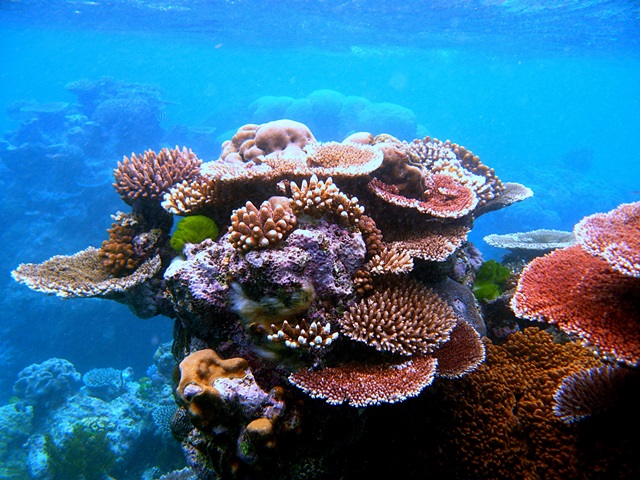The role of tourism and tourism research in maintaining the status of the Great Barrier Reef has been stressed by a Griffith University researcher in the wake of UNESCO’s ruling in Germany.
UNESCO’s World Heritage Committee confirmed the findings of a draft report released in June at a meeting in Bonn, meaning the Reef has been kept off the committee’s ‘in danger’ list. However, the Reef will be closely monitored on UNESCO’s watch list until 2019.
The Director of the Griffith Institute for Tourism, Professor Susanne Becken, has described the tourism industry as “absolutely crucial” to the future viability of the Reef.
“The tourism industry, alongside environmental lobby groups and scientists, were at the core of major changes to the way the reef is managed – leading to the very welcome decision by UNESCO not to put the Great Barrier Reef on the ‘in danger’ list,” Professor Becken said.
“The tourism industry is a major protector of the Reef, contributing to the environmental monitoring of the Reef and other important environmental programs like the eradication of crown of thorn starfish.
“The stopping of new port developments and dredging was largely driven by the tourism sector.”
 Professor Becken (left) highlighted economic benefits generated by tourist activity around the Great Barrier Reef, including more than 60,000 full-time jobs created by tourism in the region.
Professor Becken (left) highlighted economic benefits generated by tourist activity around the Great Barrier Reef, including more than 60,000 full-time jobs created by tourism in the region.
“In addition, tourism contributes directly to the day-to-day management of the Great Barrier Reef Marine Park through the collection of a $6 environmental management charge per visitor,” she said. “This alone raised more than $8 million in the financial year ending 2014.”
In terms of visitor trends, Tourism Research Australia data shows 1.7 million domestic tourists visited the Reef in the year ending June 2014, during a visit to Queensland. A further 2.2 million international tourists visited the Reef during the same time, with 42% of international visitors ranking the Reef as the most appealing tourist attraction in Australia, after beaches and wildlife.
A Deloitte Access Economics model showed that, in 2012, visitors contributed $6.4 million in direct expenditure in the Great Barrier Reef region.
“Tourism research is integral to any discussion of the Reef’s future and how both tourists and tourism operators can contribute,” Professor Becken said.
The Griffith Institute for Tourism has led a series of important research projects around the Great Barrier Reef during the past decade. Griffith researchers and colleagues from other research organisations have surveyed the views of local residents on the protection of the Reef. They have examined the tourism drivers and trends based on visitor experiences and visitor expectations. They have focused on the environment to identify changes in tourists’ knowledge of the reef environment as a result of a reef trip.
The latest research initiative, using cutting edge heart rate monitoring equipment, is a study of the emotional response of international visitors to their tourist experiences on the Reef.
“The role of tourism is absolutely crucial to the Great Barrier Reef and highlights the symbiosis of tourism and nature conservation,” Professor Becken said.
